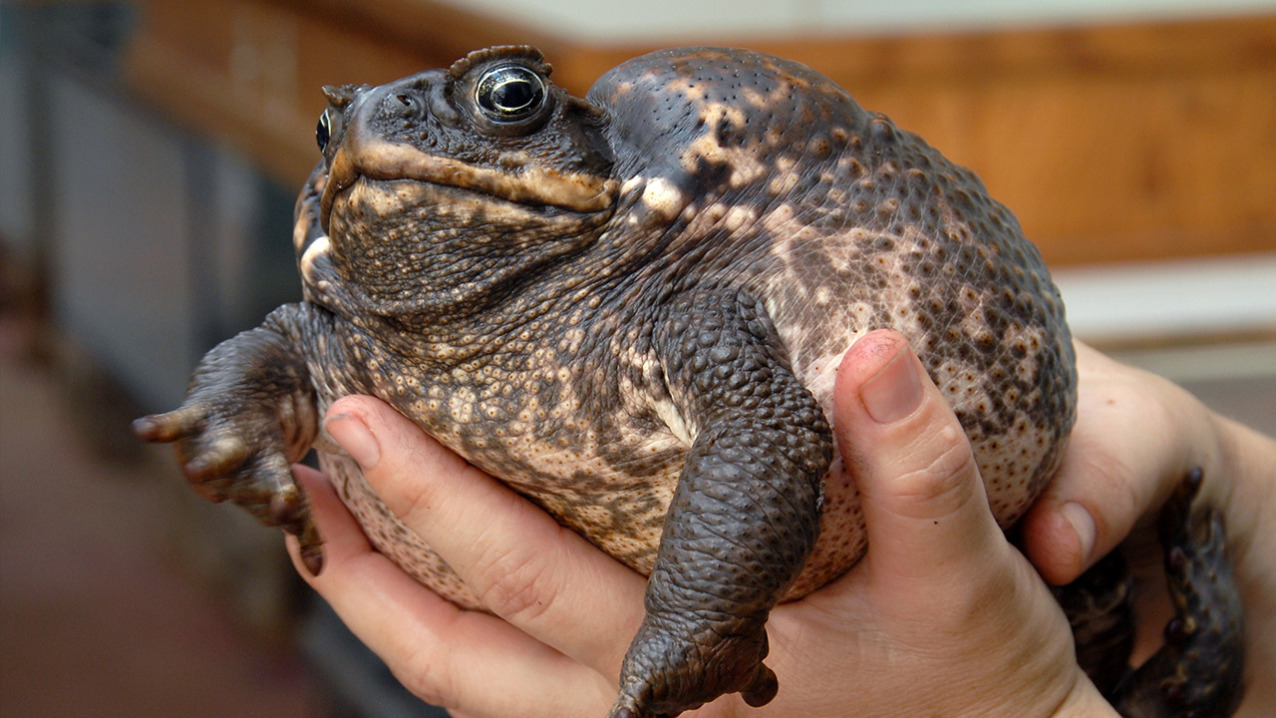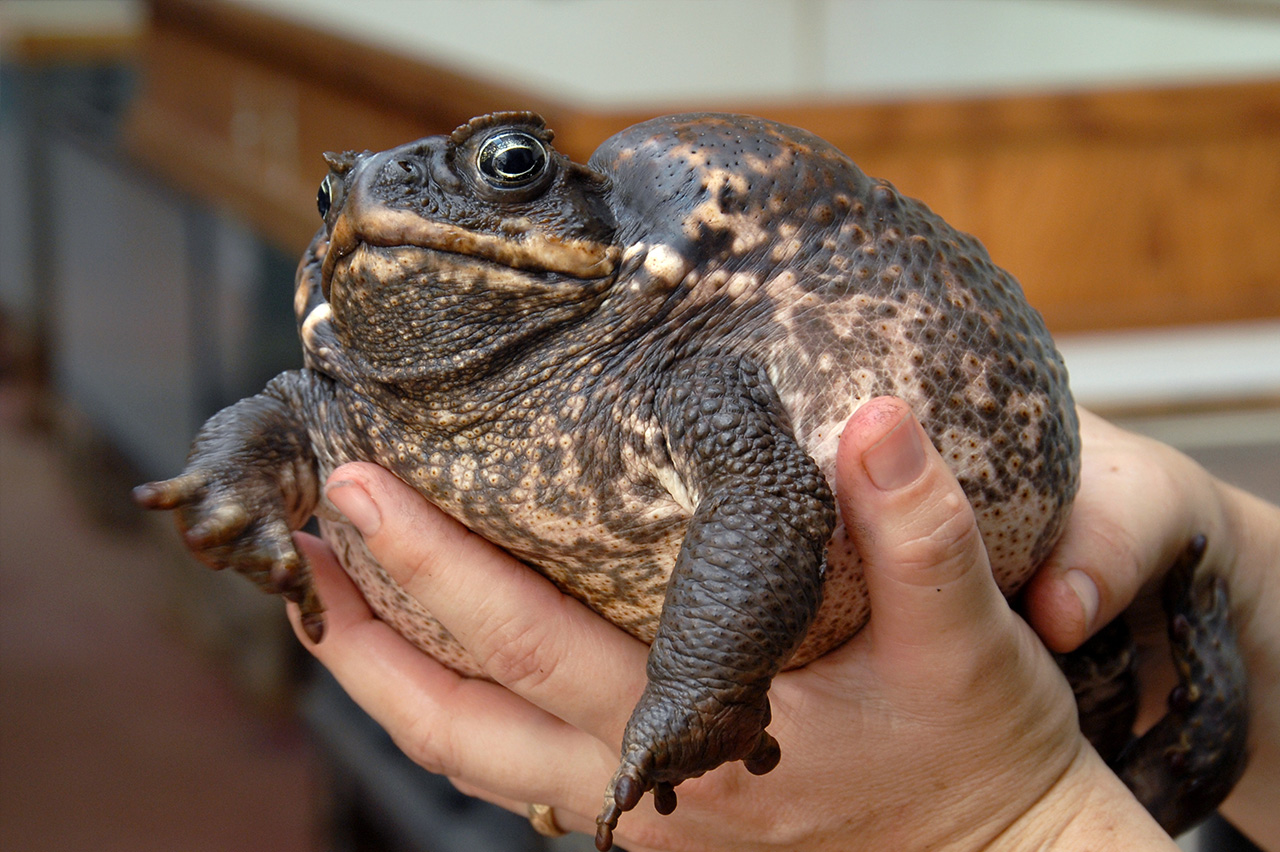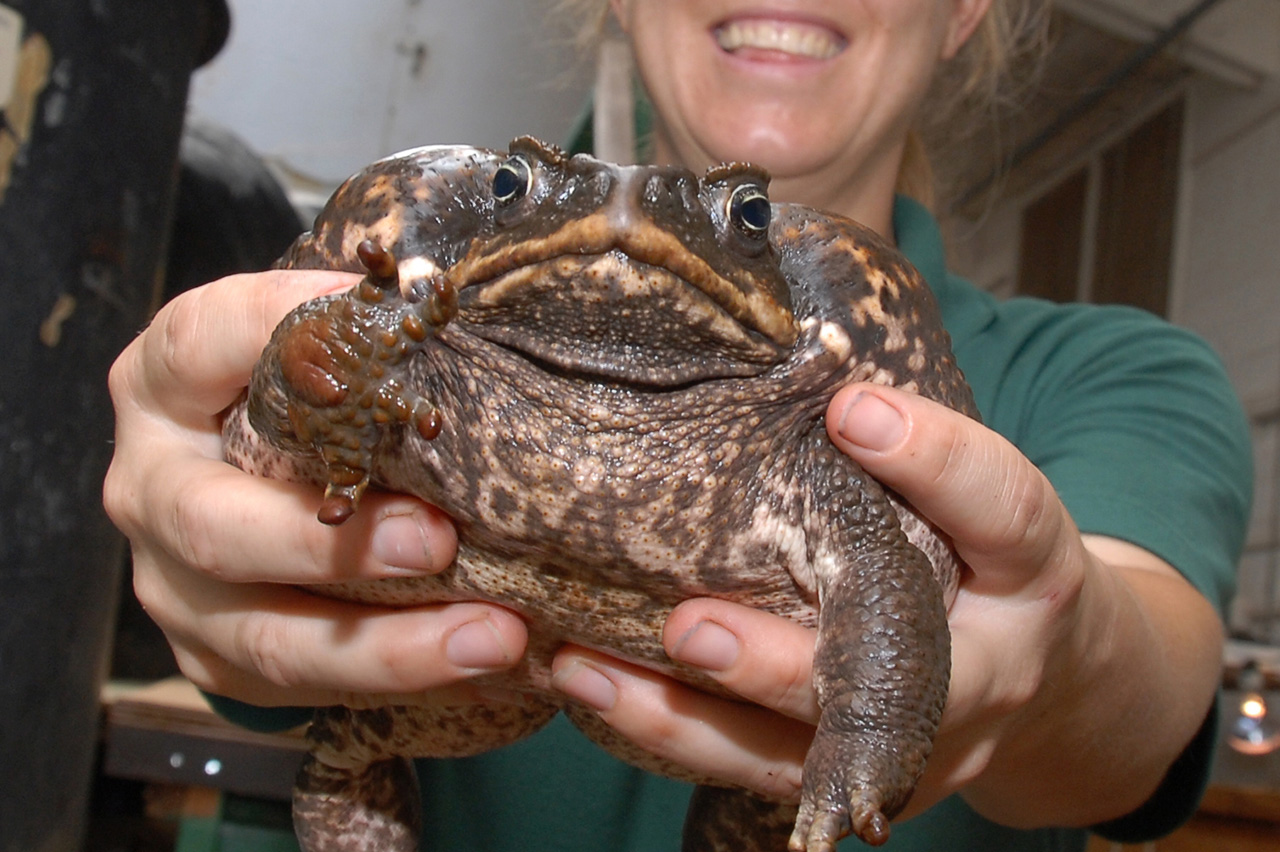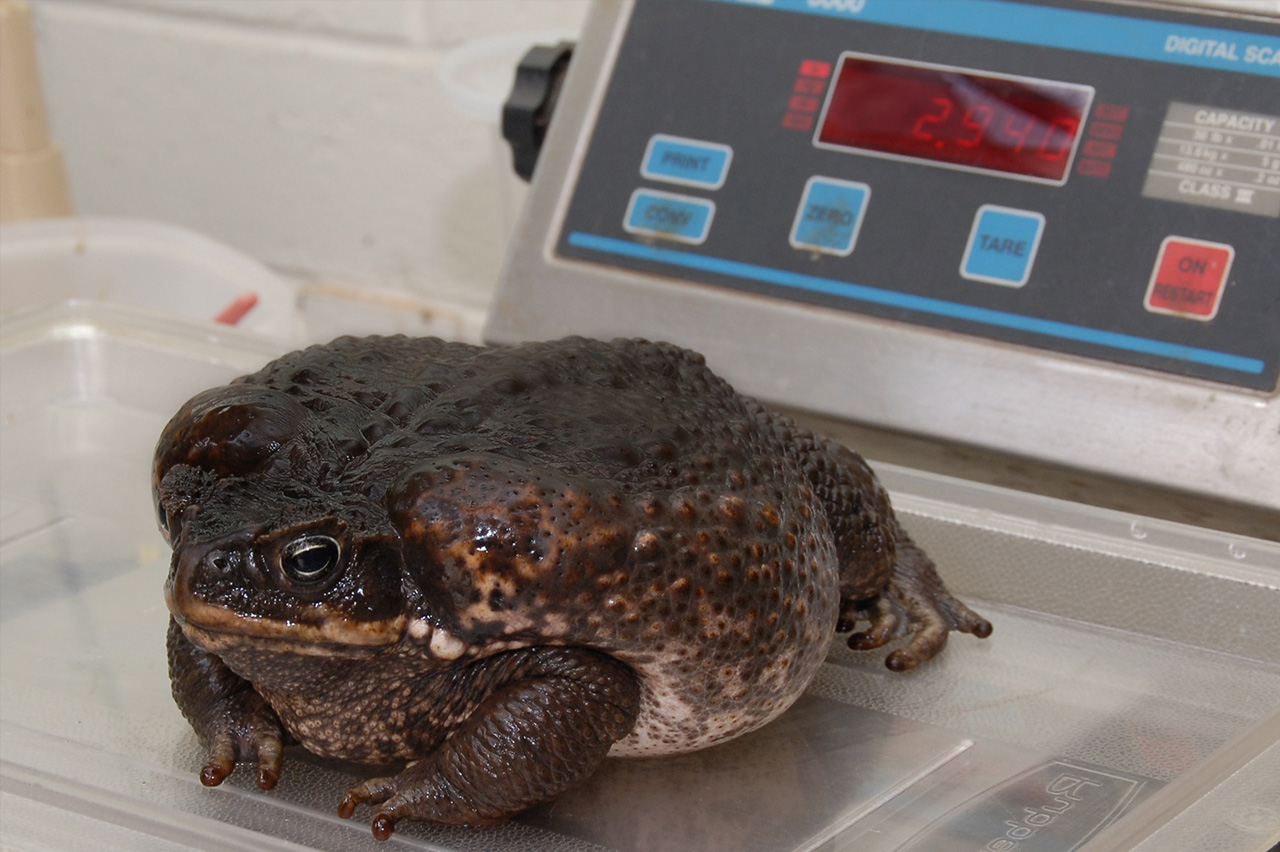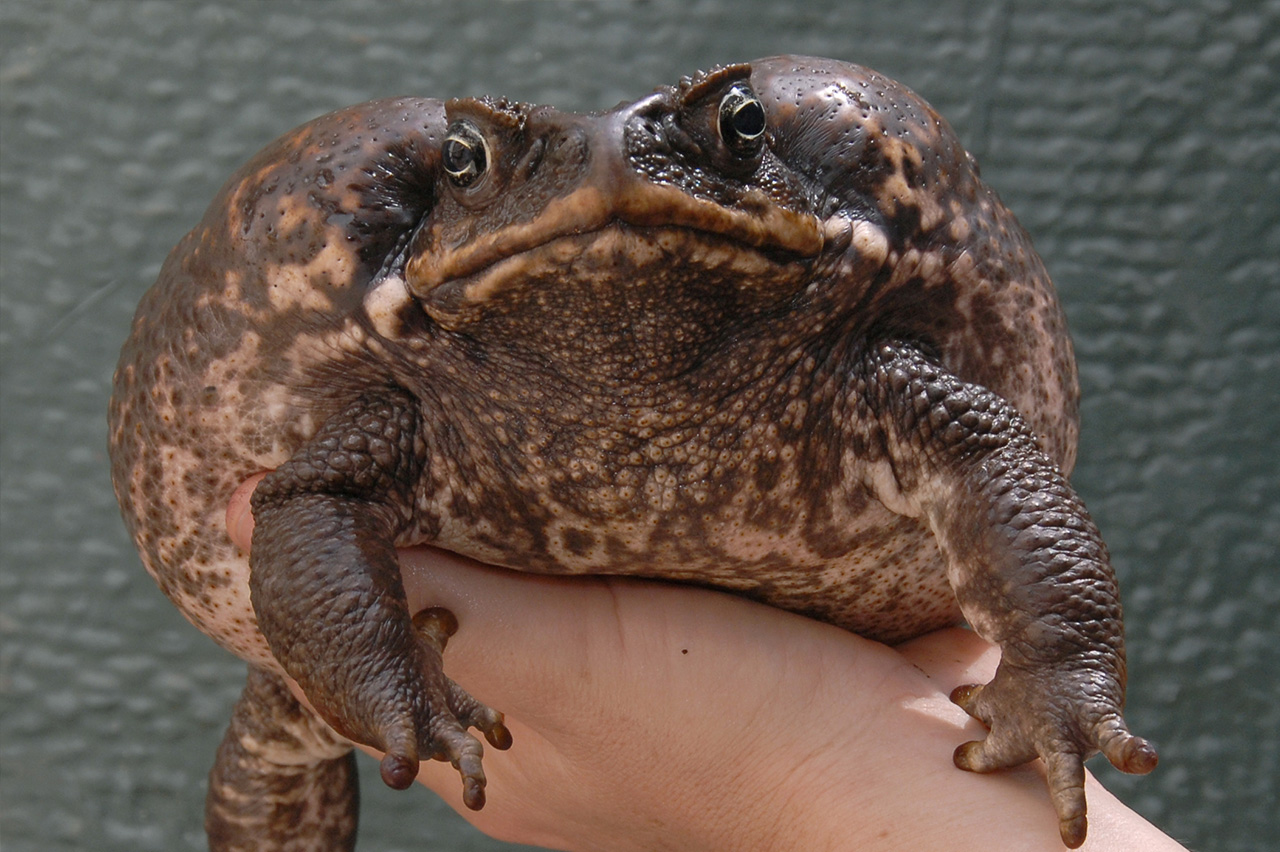Bufo marinus
Cane Toad
About Me
Cane Toads sit upright and move in short rapid hops. They are inactive during the day and are usually active at night.
The Cane Toad is the largest species in its family. Adult Cane Toads are usually heavy-built and weigh an average of up to 1.8kg. (4 lbs.).
The Cane Toad is the largest species in its family. Adult Cane Toads are usually heavy-built and weigh an average of up to 1.8kg. (4 lbs.). Their size may vary from 15-23 cm.(4-9 in.) and their skin is warty. The female is usually bigger and has softer skin than the males. Most juvenile Cane Toads when they first appear are about 10-15mm.(1 inch) long. Cane Toads will often blend in with its surrounding to hide itself from predators. Their back and sides may vary from olive-brown or reddish-brown, gray and yellow while their bellies are semi-yellow or semi-white with darker mottling. They have a round flat body, a prominent corneal crests, and light middorsal stripes. Their front feet are unwebbed while their back feet have leathery tough webbing. Cane Toads have short legs, a ridged bony head that extends forward from their eyes to their nose. Behind their ears are the parotid glands, which may cause their head to look swollen. These glands are used for defense against predators. The parotid gland produces milky toxic secretion or poison that is dangerous to all species. Some effects caused by its poison are burning of the eyes and hands, and skin irritation.
Cane Toads normally prey on insects and will eat any animal that they can ingest. Cane Toads eat almost anything such as small lizards, frogs, birds, fish, mice, bees, worms, dung beetles, scarab beetles and even younger Cane Toads. They are also known to steal food from dogs and cats if their food dishes that are left outside.
Cane toads are native to Central America and South America. In 1935 it was introduced to Australia from Hawaii. They also have been introduced to Florida, Caribbean Island, Venezuela, Puerto Rico and Philippines. The introduction of Cane Toads to many parts of the world was mainly to help control the population of insects that were threatening commercial sugar cane. The Cane Toads original habitat before its dispersal by humans was subtropical forests near fresh water. However, they can now be found in many places such as man made ponds, gardens, drain pipes, debris, under cement piles, and junk beneath houses. Cane Toads will usually stay on dry land; and reproduce in any shallow water near its surrounding.
Cane Toads sit upright and move in short rapid hops. They are inactive during the day and are usually active at night. During the winter and dry seasons Cane Toads will often hide in hard to reach moist places such as beneath logs, rocks debris and hollow depressions. When a predato attacks a Cane Toad, their skin releases a milky white poison. The mating call of the male Cane Toad is a long loud purring trill, like a high-pitched telephone dial tone, or the sound of a distant motorboat. Juvenile Cane Toads, which are called toadlets or metamorphs are active both day and night. The younger toads are said to be less toxic than the adult. During feeding, these toads are known to be very quick, energetic, and persistent in capturing prey.
Cane Toads breed between the months of April and September in the Northern Hemisphere. They can be heard as they call their mates beginning in late March. Every year each female Cane Toad produce two clutches of about 8,000 to 35,000 eggs. The eggs are externally fertilize by the male’s sperm. These eggs can be found floating on the surface of water in a jelly-like string or also wrapped around vegetation and other debris in the water. Age and size of the female will determine how many eggs the toad will produce. Within 24 to 72 hours (1-3 days) the eggs will hatch and form a school of tiny shiny black tadpoles. The rate of the tadpole’s growth depends on the temperature of its habitat and the food availability. It has been estimated that only 0.5 percent of the Cane Toads survive to maturity. It takes a year to reach the maturity and they are about 75 mm. long. Cane Toads are estimated to live 10-40 years.
Although Cane Toads are not endangered species, the number of Cane Toads in the wild has been declining. The main reason for much of its decline is human pollution and more development. In Australia, Cane Toads are commercially used mainly for their products, taxidermists to produce souvenir items, and biological specimens. Cane Toad skin is used to make leather products.
http://australianmuseum.net.au/Cane-Toad/”>Australian Museum Online
Cane Toads, Lewis, Stephanie, 1st Ed., Doubleday, New York 1989.
Mahalo to Leeward Community College’s Zoology 101 Class for their contribution
Other Amphibians
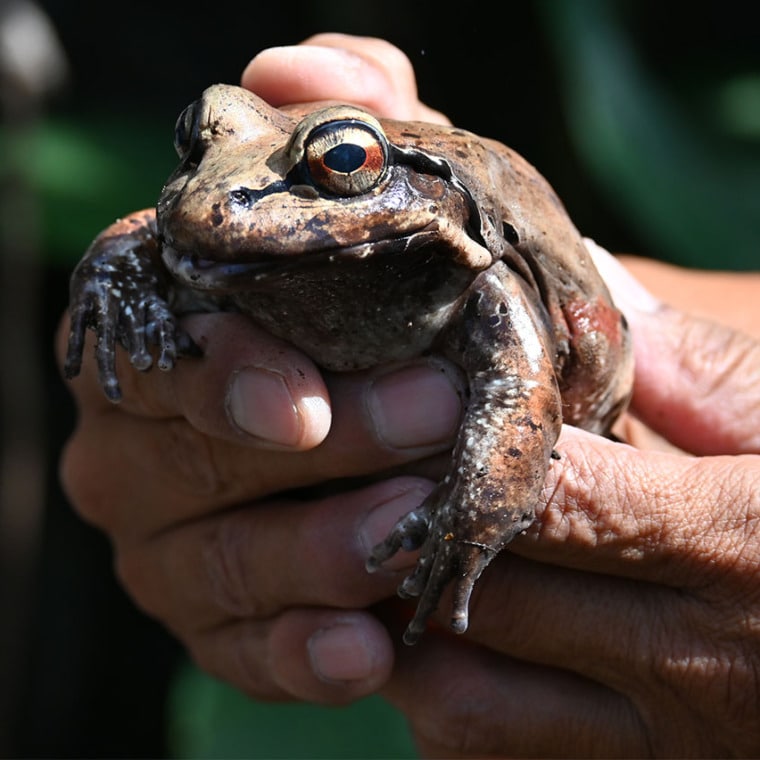
Due to their voracious nature, these frogs are solitary and males can be fiercely territorial.
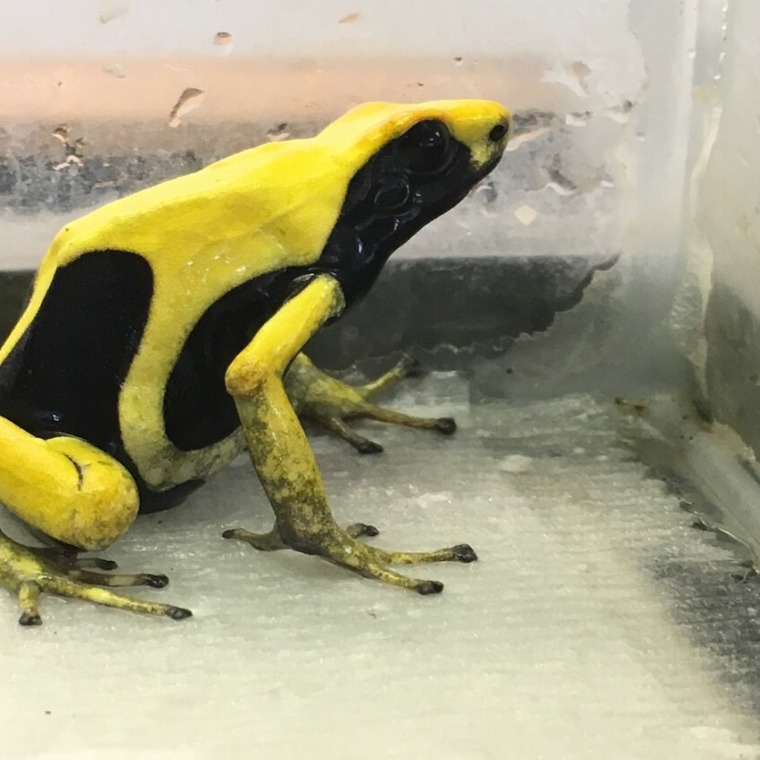
Like most Poison Dart Frogs, these animals only grow to be about two inches.
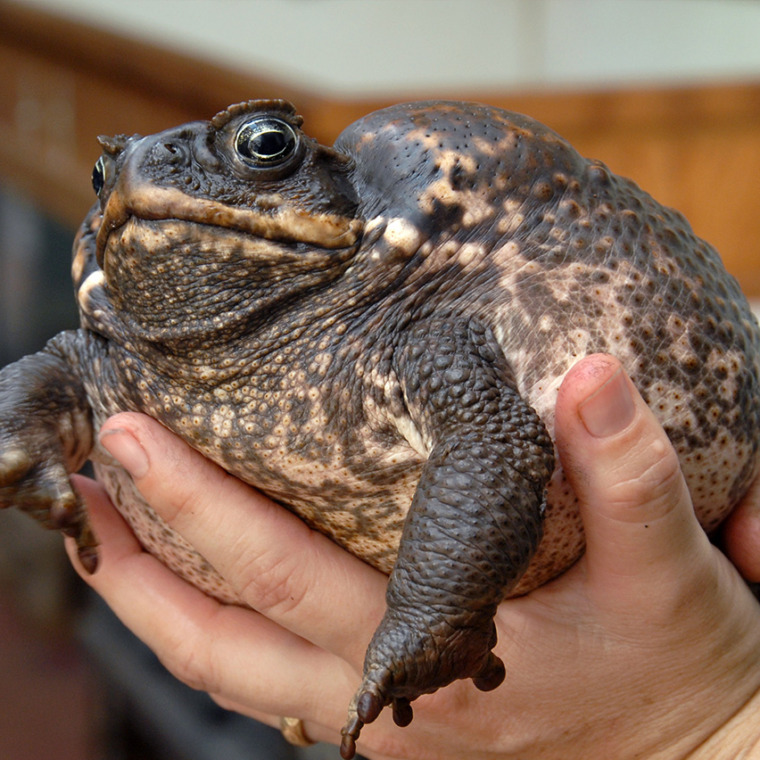
The Cane Toad is the largest species in its family. Adult Cane Toads are usually heavy-built and weigh an average of up to 1.8kg. (4 lbs.).
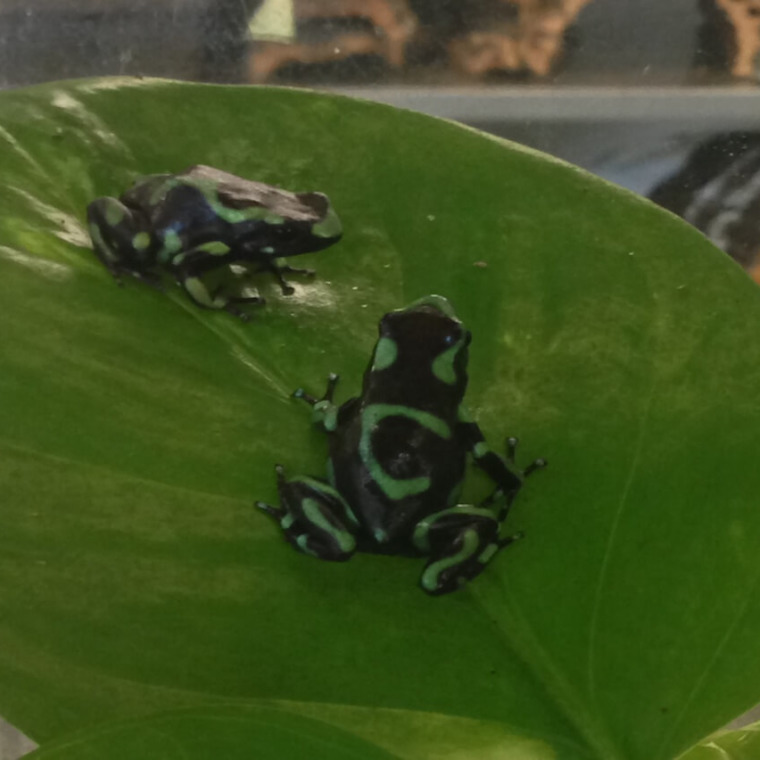
This small frog grows to about two inches long and is immediately recognizable for its brilliant green colors, amplified in intensity by a black background.


